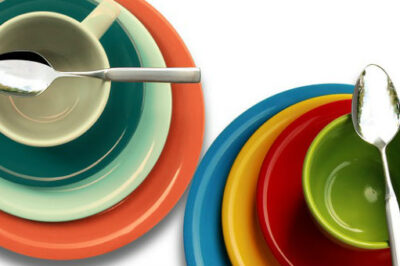My friend Kathrine Lee likens each of your body’s cells to a baby bird with a wide-open mouth, crying, “Feed me! Feed me!”
If you dump enough dirt on the baby birds, they’ll be quiet for a time. But if the dirt doesn’t kill them, they’ll soon start crying for food again. So it is with you. Filling your stomach with junk food will stop your hunger pains—for now. But if your cells aren’t getting the nutrition they need, they’ll soon start crying for food again. And those cells crave a lot more than just calories.
What you eat makes a difference for your physical health (including your weight), your psychological well-being and just about every other aspect of your life. So, how do we satisfy those starving-baby-bird cells? You need a healthy eating plan.
If there’s one thing that makes a bigger difference than anything else, it’s going unprocessed. Food that’s in a package with a long shelf life and a long list of ingredients is processed. The less processed a food is, generally the better it is for your health.
As for the specifics, here’s a healthy eating plan that will serve you well (unless you have truly unusual health issues.) It’s not a diet. It’s a way to eat for the rest of your life.
Water
Water is for more than just showers. It’s also the best beverage to drink. If you don’t like water, try switching gradually. Try flavored water, such as Crystal Light, as a transition; it’s certainly better than soda. Or better yet, try a cucumber slice, lemon or strawberry in a glass of ice water.
What kind of water is best? The kind you will drink. Some bottled water is no different from tap water. If you don’t care for the taste in your water supply or if you wish to decrease the small amount of chemicals in most commercial water, purchase an inexpensive water filter to put on your kitchen tap or refrigerator water supply. There’s no evidence that an expensive water system (such as reverse osmosis, ionized or pH-balanced) will make a significant improvement in your health. If you live in an area with a commercial water supply, there’s no reason to drink sodas because you don’t want to purchase a water-filtration system.
Sugar-sweetened beverages and fruit juice raise your blood sugar quickly, increasing insulin, fat production and inflammation throughout your body. When your blood sugar crashes, you’re hungry again—for more sugar. It’s the ultimate “dump” on those baby-bird-hungry cells. An occasional cup of fruit juice is OK, but not as your primary source of liquid. And artificial sweeteners are at least as bad; they create addiction-like cravings for more.
Sports drinks and energy drinks generally contain significant amounts of sugar, caffeine, artificial sweeteners and/or other artificial ingredients. If you’re struggling with vomiting or diarrhea or are exercising strenuously and need electrolytes, these drinks may be helpful. Otherwise, these are best left alone.
Fruits and Vegetables
There’s no better way to pack more nutrients into your diet and satisfy those baby-bird-hungry cells than to choose food that grows from the ground or falls from a tree. The natural fiber is also great for your cardiovascular and digestive systems.
When choosing fruits and veggies, remember:
- Fresher is better. Produce that’s in season is likely fresher and less expensive than that which isn’t. Try a farmer’s market. Remember that organic may not be worth the extra money. If you want to buy organic for only the worst offenders, check the list of the Dirty Dozen fruits and veggies.
- Fresh first, frozen second, canned third. Fruits and veggies are generally frozen at near-peak ripeness, and little if any nutrition is lost. They may contain more nutrition than fresh produce picked too green or languishing on the shelf.
Canning adds a level of processing to produce that decreases its nutritional value. Eating canned? Choose fruit in natural juice to limit the sugar, and rinse canned vegetables before using to remove some of the added sodium.
- Darker, brighter and more colorful means more nutritious. Think dark green, bright yellow, deep purple, bright red. Those natural foods that pack the most nutrition per serving include red and purple berries and dark greens like kale, collards and spinach.
- Add more. Adding fruits and vegetables to your diet can be one of the healthiest changes you can make. You need several servings each day.
Lean Protein
Going vegetarian can be a healthy way of eating. Beans, legumes and nuts have great fiber and protein. Soaking beans overnight and then cooking them long and slow will lessen the flatulence factor. Sometimes taking an enzyme such as Beano will lessen any bloating or gas.
If you eat meat, here are some things to remember:
- Less red. Research demonstrates many reasons to limit red meat. More red meat may cause an increased risk of heart disease and certain cancers. But one or two servings of lean red meat per week shouldn’t increase your health risks significantly.
- Prepare lean. Fried food appears to be one big reason the South is known as the stroke belt. Grilling at high temperatures is also dangerous, producing cancer-causing heterocyclic amines (HCAs). Baking, broiling, and slow-cooking are healthiest.
- Say no to processed. This may be the most important choice of all. Eating processed meat (such as hot dogs, bacon, ham and sausage) increases your risk of premature death more than most other dietary factors.
- Rethink dairy. Most people can safely use moderate amounts of dairy products as a healthy part of their diet. Milk and milk products can be a great source of calcium and protein. Controversy exists over whether reduced-fat or whole milk is preferable.
- Use caution with cheese. Some vegetarians simply substitute cheese for meat. That’s not healthy! Cheese packs too much fat to be a wise primary source of protein; use it occasionally.
- Consider organic. There’s significant concern about additives in even unprocessed meat, such as antibiotics or other chemicals used in the care of animals, fish or poultry from which the meat in our food supply comes. There’s something to be said for free-range, wild or grass-fed when it comes to meat. Choosing organic meat makes even more sense than it does for produce. However, processed or high-fat meat is a much greater danger to your health than non-organic lean meat ever would be.
Fats
Second to water, your brain is mostly fat. The walls of your body’s cells are made of fats. You need some healthy fats every day. The trick is to separate the good, the bad, and the ugly.
- The good. You need the polyunsaturated fats that are found in olive oil, nuts and avocados for brain function and more. Consider switching to olive oil for daily use. This step alone has been found to improve longevity and cardiovascular health.
- The ugly. Trans fats, which are found in many baked and fried foods, margarine and desserts, clog up your cardiovascular system. Read food labels and keep your daily intake of trans fats to less than 1 gram.
- The bad. Almost everything else. They add calories while adding minimal nutrition and may increase cholesterol. Use in limited amounts.
Whole grains
The difference between eating processed, refined flour products and whole grains is as huge as the difference between night and day, at least as far as your health is concerned. Processed refined flour, found in most baked goods, cereals, pasta and snacks, has been linked to depression, cardiovascular disease, diabetes and more. There is something very unhealthy about refined wheat flour.
Whole grains, however, are an excellent source of fiber, protein, B vitamins and other essential nutrients. Two new high-quality studies demonstrate that eating more whole grains decreases cardiovascular disease and death from all causes. The biggest single factor explaining the positive effect on health was the amount of bran eaten. Other research also correlates eating whole grains with a decreased risk of diabetes.
Steel-cut oats probably have the best reputation of all, but other whole grains can be healthy also, such as barley, whole wheat, whole-grain rice and millet. Whole-grain bread and cereal can be part of a healthy diet.
What Should You Eat?
In summary, at least 80 percent of your diet should be:
- A variety of colorful fruits and vegetables
- Lean protein, such as beans, fish, and poultry
- Healthy fats, such as olive oil, nuts, and avocados
- Unprocessed whole grains
- Water
The hamburger or hot dog, the bacon, the pasta with meat sauce, the croissant, the TV dinner, the Oreo cookie, the ice cream—if you keep all of these to the less than 20 percent of your diet that is discretionary, you’ll probably do just fine.
And finally, slow down. It takes your brain 20 minutes to register what you’ve eaten. Take a small portion and savor every bite. If you’re still hungry a while later, take another portion. Food was meant to be enjoyed!
For almost all of us, food will be there again tomorrow. Jesus asked us to pray, “Give us this day our daily bread” (Matt. 6:11). Fresher, cleaner, simpler—and just enough for today. {eoa}







Leave a Comment
You must be logged in to post a comment.